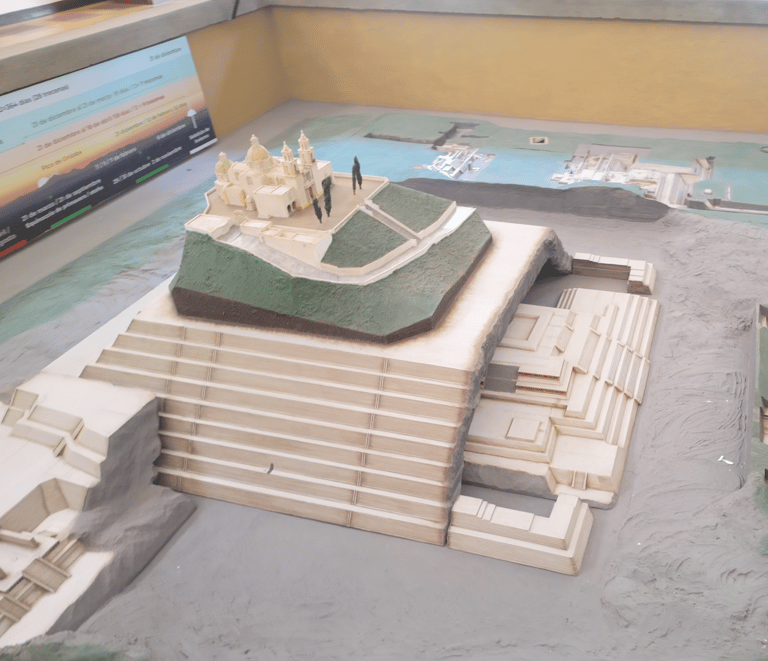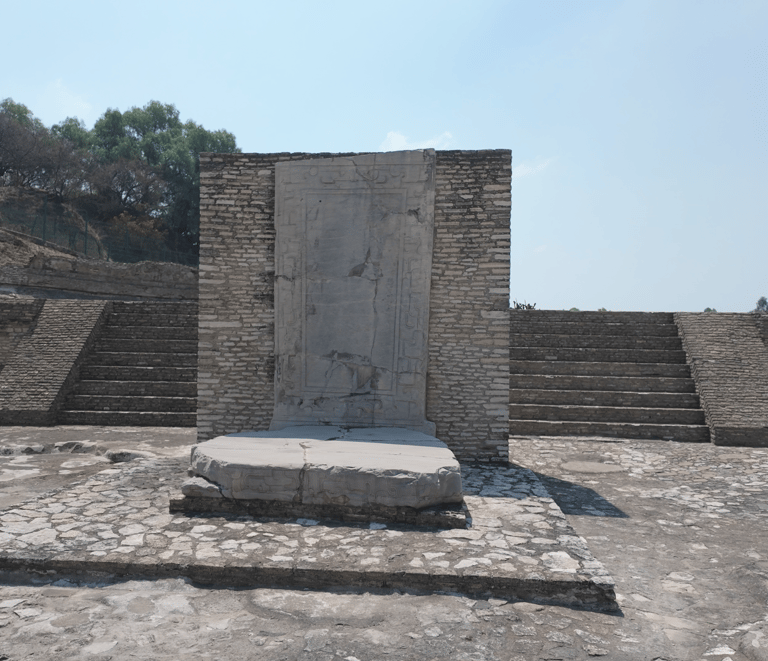Lightning Crashes at Biggest Pyramid in the World - Cholula, Mexico
PUEBLA, MEXICO


Cholula is only about 30 to 45 minutes drive from Puebla and is a very interesting day trip that I highly recommend. In addition to being home to the largest pyramid in the world, Cholula is also one of the oldest continuously inhabited cities on Earth. In fact, it is the oldest still-inhabited city in all of the americas. Settlement is thought to have begun roughly around 500 BC and the current population is around 120,000.
The Great Pyramid of Cholula
When talking about pyramids, most people think about Egypt, but the world’s largest pyramid isn’t in Egypt—it's in Cholula, Mexico! According to the Guinness Book of Records, the Great Pyramid of Cholula, also known as Tlachihualtepetl, is the largest pyramid as well as the largest monument ever constructed anywhere in the entire world, with a total volume estimated at over 4.45 million cubic meters, even larger than that of the taller Great Pyramid of Giza in Egypt, which is about 2.5 million cubic meters. While the Giza Pyramid is taller, the Cholula pyramid is nearly twice the size by volume.
Construction began in the 3rd century BC and continued through to the 9th century through several stages, with new layers representing a different era and civilization. The pyramid was constructed using adobe bricks, and each new layer was built over the previous layer, resulting in a series of nestled pyramids. Very little is known about the earliest civilizations, but the most recent civilizations were the Olmeca-Xicalanca beginning around the 8th century and Tolteca-Chichimeca beginning sometime between the 9th and 12th centuries. The Tolteca-Chichimeca decided to create their own new temple at another site - which is thought to have led to the partial abandonment of the original pyramid complex. Today, the pyramid complex remains partially covered by a hill and is largely unexcavated due to the religious significance of the church that was built on top of the pyramid by the Spanish in the 16th century. In the 19th century, archeologists undertook some limited excavations by creating 8 km of tunnels under the pyramid complex. Most of what we know now is due to these excavations.
The pyramid was thought to have been dedicated to the God Quetzolcoatl, a serpent god of wind and rain, and had a strong connection to Teotihuacan in the Valley of Mexico; however, the exact nature of this relationship remains unclear. Cholula was one of the greatest religious centers in Mesoamerica and received pilgrims from many other pre-hispanic sites. The two high priests at Cholula were thought to be charged with confirming the legitimacy of foreign rulers in other areas, making their role one of great power and importance in the region. Despite its importance, this site remains significantly undervalued compared to other pre-hispanic sites.
The complex includes several pyramid structures, a courtyard of altars, and over 400 human burials - including human sacrifices, as demonstrated by mangled body parts and skulls from decapitated victims at the site. A number of children's remains were also found around the complex - thought to have been sacrificed as messengers of the Tlaloc (a god of rain) to seek an end to droughts occurring in the region. It was believed that the tears of sacrificed children would bring rain. According to the local archeologist who guided me around the site, these children were often chosen at birth - those born with specific cowlick patterns on their heads - and were sacrificed at 6-10 years old.
At its peak, this site had an estimated population of 30,000 to 50,000 people, though some estimates are as high as 100,000 people. In terms of its decline of importance, as I mentioned, the Tolteca-Chichimeca moved their main temple to another location. Other theories related to its decline suggest volcanic eruptions, flooding, and social upheaval. Over time, the pyramid eventually disappeared beneath growing vegetation to the point where it resembled a large hill. The hill became known to the locals as Tlachihualtepetl, meaning “made-by-hand mountain” in Nahuatl and became an important place of worship with a temple on top dedicated to a goddess of rain until the Spanish arrived.
Arrival of the Spanish
When the Spanish arrived in 1519, led by Hernán Cortés, they found the site overgrown and did not know about the pyramid complex hidden beneath the hill. Not long after their arrival, Cortés would massacre thousands, performing an attack, now known as the “Cholula Massacre,” that killed as many as 30,000 of the local residents. Cortés had made an alliance with the Tlaxcalans, who were the city’s enemies. According to one historical account, Cortés was told by the Tlaxcalans of a secret plot against his troops. As a countermove, he invited the Cholulan nobles to a meeting in their own courtyard, leaving the Tlaxcalan warriors waiting outside. Once inside the courtyard, the Tlaxcalan warriors stormed in, slaughtering several thousand unarmed Cholulans.
In 1594, the Spanish destroyed the Indigenous temple that was on top of the hill and built a church in its place (Iglesia de Nuestra Señora de los Remedios translated to Sanctuary of Our Lady of Remedies in English). Before the church was built, the Franciscans attempted to put a large wooden cross on top of the hill, but each time they tried, lightning struck it down. The local Indigenous community attributed the lightning strikes to the old rain goddess called Chiconauhquiauhitl (Goddess of the Nine Rains) who was formerly worshiped at the site. The Spanish decided to replace her image featured in the original Indigenous temple with a catholic image of the Virgin of Remedies in the new catholic church. She was very important to the conquistadors because she was believed to have granted a miracle enabling the defeat of the Aztecs.
The pyramid complex under the church remained relatively undisturbed for centuries. It was not until the 19th century that the pyramid complex was discovered by archeologists. However, only a fraction of the pyramid complex has been excavated and its history remains relatively unstudied due to the religious significance of the catholic church built on top by the Spanish.
Lightning Crashes
During my first visit to Cholula, I stayed at a nearby Airbnb with a view of the church perched on top of the hill. On my last night, there was a huge storm - and I thought the church would be struck by lightning that night. After hearing that the Indigenous inhabitants believed that local lightning storms in the 16th century were an act of their old rain goddess against the Spanish, I watched the storm with layers of awe, while trying to imagine what it was like for the Indigenous locals after the Spanish arrived, massacred their people, destroyed their Indigenous temples, and began the process of indoctrination while using the same materials of their destroyed temples to build new churches in their place. It was easy to understand why the old goddess of rain was pissed off and aiming bolts of lightning at the Spanish.
And as I watched the lightning crash around the site, I could not help but reflect on what was most striking to me. Many of the descendents of those who were massacred by the Spanish in Cholula in the 16th century now protect the catholic church built on top of what was one of greatest religious centres in pre-hispanic mesoamerica - and because of the religious significance of this catholic church, a more complete understanding of the history and religious significance of the archeological site and the pre-hispanic civilizations occupying it remain out of reach for the foreseeable future.



